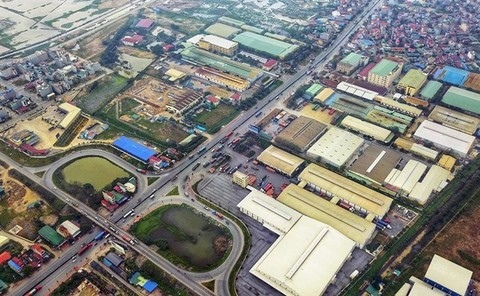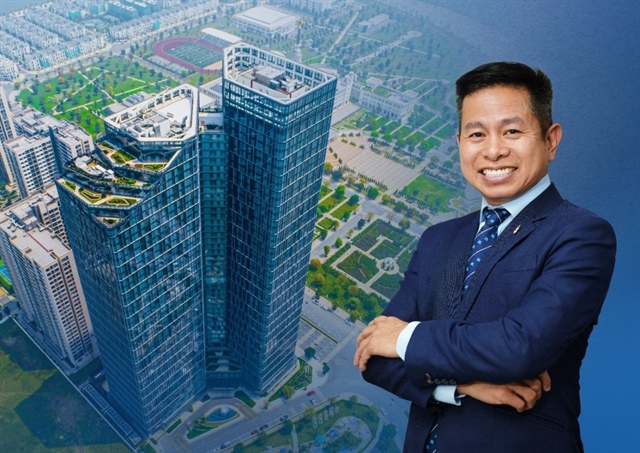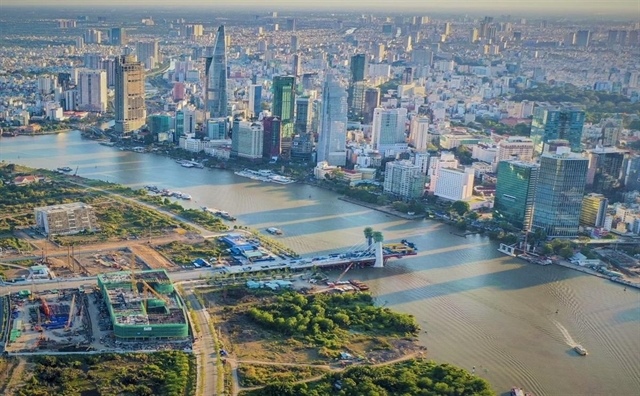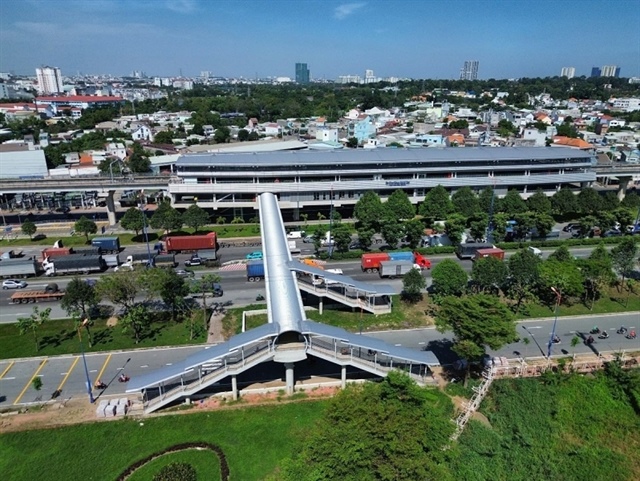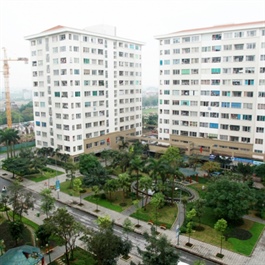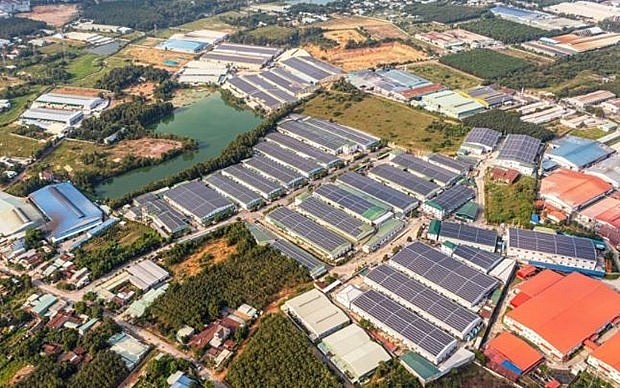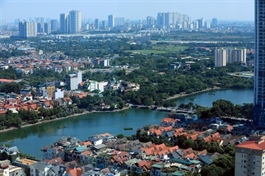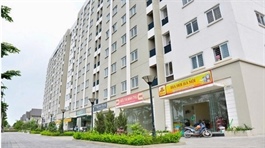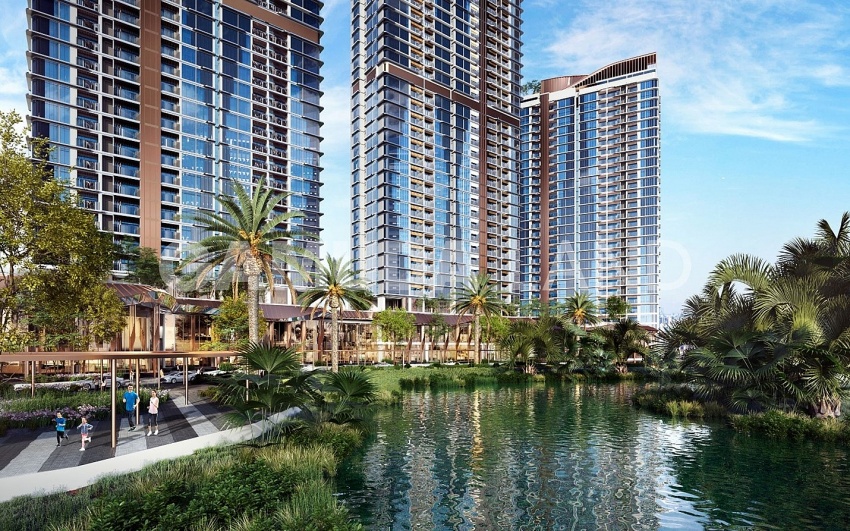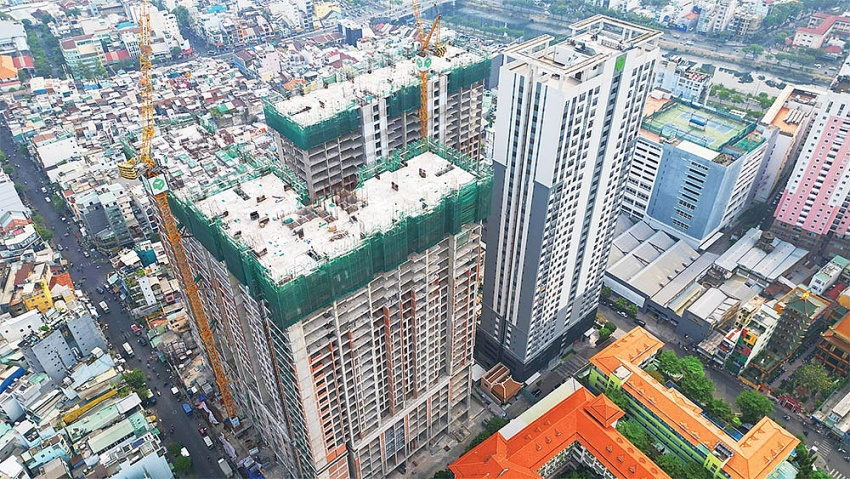Industrial real estate continued to be a bright spot in 2024
Industrial real estate continued to be a bright spot in 2024
Local experts predicted the industrial segment would revitalize the real estate market in 2024.
Local analysts predict that industrial real estate will revive the property industry in 2024, after most other property segments struggled in 2023.
Rental prices and supply up
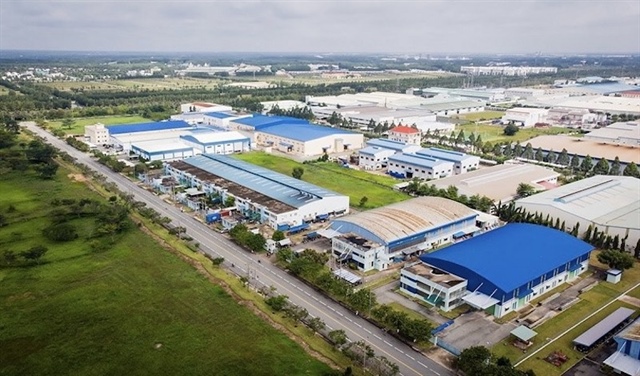
Rental prices for industrial real estate are expected to rise by between 3% and 9% over the next three years. Photo: Becamex |
Rental prices for industrial properties are expected to increase by 3-9% over the next three years, according to the latest report by real estate consultancy CBRE Vietnam. The projected annual increase in the northern region is expected to be between 5% and 9%, while in the southern region the estimated range is between 3% and 7%.
Positive demand from various industrial groups and countries will help drive rental price growth in many localities nationwide, the firm said.
In addition, rental prices for ready-built warehouses/factories are also expected to rise slightly by 1-4% per annum over the next three years, the report said.
CBRE cited some factors that are expected to contribute significantly to the future growth of these industries, such as the semiconductor and electric vehicle industries, which have been investing in Vietnam since 2023, with a growing number of localities prioritizing the development of these sectors, as well as a steady increase in the interest of enterprises in high-tech and sustainable industries.
According to Dinh Le Hanh, Chairwoman of Dinh Le Group, which provides rental services for ready-built factories to about 120 foreign companies, the highest rental price in the northern region reaches US$160-170 per square meter (with a lease term of 55 years). The rental price in the southern region is slightly higher, ranging from $180 to $200 per square meter, she added.
In 2023, industrial parks nationwide achieved an occupancy rate of over 80%, with key provinces in the northern region reaching 83% and those in the southern region reaching 91%, according to Savills Vietnam.
According to the Vietnam Association of Realtors, the industrial real estate segment maintained its leading position in 2023. Seven industrial parks became operational and 13 were under construction, bringing the total number of established industrial parks in the country to 412, with a total area of 217,500 hectares.
Of these, 293 industrial parks were in operation, with a total area of approximately 92,200 hectares of natural land and approximately 63,000 hectares of industrial land. There were 119 industrial parks under construction, with a total area of about 37,500 hectares of natural land and about 24,700 hectares of industrial land.
The report also showed that industrial parks attracted over 10,400 domestic investment projects and more than 11,200 valid foreign direct investment (FDI) ones, with a total registered investment capital of over VND2.54 quadrillion ($103.7 billion) and $231 billion, respectively.
FDI in industrial parks and economic zones accounted for about 35-40% of the total additional registered FDI capital in the country in recent years. This has stimulated local infrastructure and economies, laying the foundation for the development of many supporting industries, residential real estate, and rental properties, the association underlined.
Promising outlook for 2024
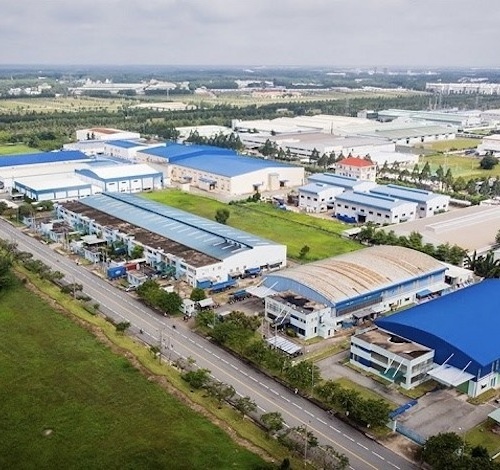
The development of industrial real estate represents a very favorable direction for the real estate market. Photo: Pham Hung/The Hanoi Times |
Dr Vu Dinh Anh of the Institute of Economics and Finance predicts that the industrial property segment will continue to thrive in 2024, thanks to improvements in the flow of investment capital. In particular, industrialization is a key focus of provincial and city planning. Therefore, the development of industrial property is a very promising direction for the property market, he pointed out.
Nguyen Quoc Anh, Deputy General Director of Batdongsan.com.vn, also expressed his expectation that industrial real estate, existing housing to meet the needs of professionals and workers in industrial zones, and the residential segment will lead the recovery of the real estate market in 2024.
Nguyen Van Dinh, chairman of the Vietnam Association of Realtors, agrees that the future for the industrial property segment remains bright. This is because Vietnam continues to create various driving forces that contribute to the development of the industrial real estate market.
He added that FDI capital flows remain positive, benefiting from the favourable tax incentives. Transport infrastructure is becoming increasingly synchronized and upgraded, with top-level infrastructure investment commitments in the region. Support services for industrial zones are gradually being improved.
In addition, many new investment projects in industrial zones have been approved for investment and are entering subsequent phases. The supply of industrial real estate is growing in both the northern and southern regions. Demand for industrial property remains high, especially for multi-storey multi-purpose warehouses and ready-built factories, Dinh stressed.
In terms of rental prices, Dinh Le Hanh of Dinh Le Group predicted that from 2024 to 2025, industrial land rental prices will increase by 6-10% per year in the northern region and 4-8% per year in the southern region. Optimistic rental demand is coming from various industries and countries, driving rental price increases in many localities. Rental prices for prefabricated warehouses are expected to increase slightly by 2 to 4% per year.
As a segment that provides space and infrastructure for industrial enterprises, contributing to economic growth and social development, industrial real estate plays a crucial role in supporting production and distribution activities, according to local insiders.
Driven by the country's focus on economic and social development, the promotion of industrialization and modernization, the sector is poised for robust growth in 2024 and beyond, with numerous factors driving its advancement.



